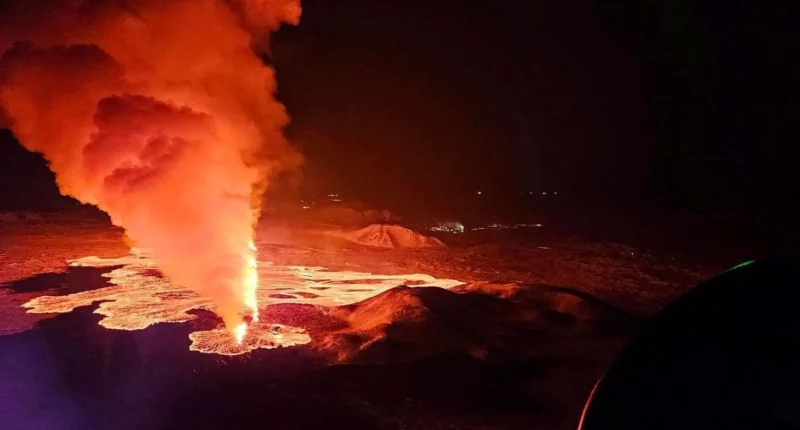We know that Iceland and its volcanic activities are a common occurrence now but the frequency with which the volcanic explosions have taken place in the country has put everyone on alert mode. It is reported that the Fagradalsfjall volcano in southwestern Iceland has erupted again after several months of intermittent activity, capturing the attention of both locals and the global scientific community. This latest eruption, commencing late Thursday evening, has been characterized by spectacular lava flows and an impressive ash plume, visible for miles around the region.
The Fagradalsfjall volcano, located approximately 30 kilometers southwest of Reykjavik, first made headlines last year when it erupted following centuries of dormancy. Since then, the volcano has experienced a series of flare-ups, each varying in intensity and duration. The Icelandic Meteorological Office (IMO), which has been closely monitoring the situation, reported that the latest eruption follows a significant increase in seismic activity in the area, suggesting that magma had been moving towards the surface.
Despite the potential dangers associated with volcanic eruptions, the IMO has indicated that this event does not currently pose a threat to nearby populations or critical infrastructure, including Keflavik Airport, Iceland’s main international gateway. The eruption is occurring in a remote valley, away from residential areas, and officials have established safety perimeters to protect curious onlookers and hikers frequenting the area.
Volcanologists studying the eruption have been fascinated by the opportunity to observe and analyze the volcanic processes in real-time. Dr. Emily Johnson, a leading expert in volcanic activity at the University of Iceland, stated, “Each eruption at Fagradalsfjall provides invaluable data that helps us better understand the behavior of volcanoes not just in Iceland, but globally. The patterns of seismic activity leading up to this eruption were particularly intriguing.”
The eruption has also attracted tourists and photography enthusiasts from around the world, eager to witness the natural spectacle of flowing lava and the night sky illuminated by fiery glows. The Icelandic authorities have urged visitors to follow safety guidelines and remain at designated observation points.
As the eruption continues, scientists and officials are closely monitoring the situation for any changes that could impact safety. The IMO continues to provide regular updates, utilizing satellite imagery and ground observations to track the volcano’s activity. This latest eruption serves as a reminder of Iceland’s dynamic landscape, often referred to as the “Land of Fire and Ice,” and the inherent unpredictability of its volcanic regions.









